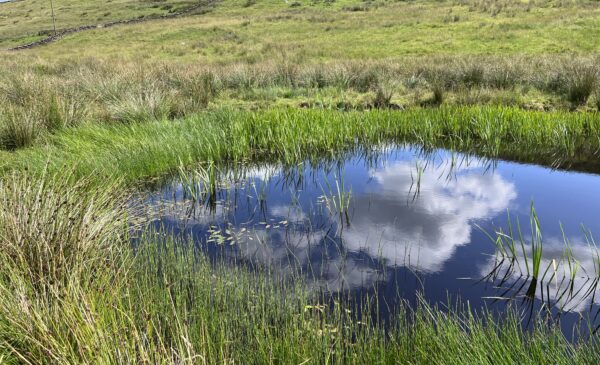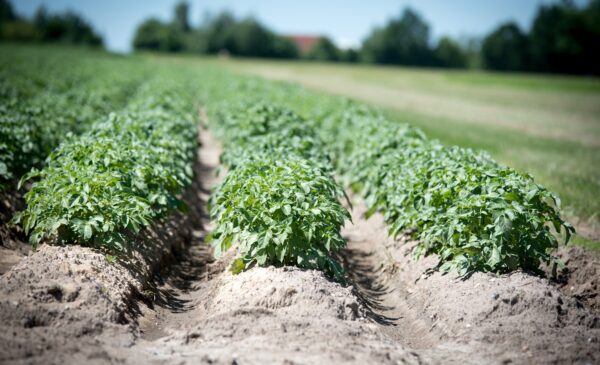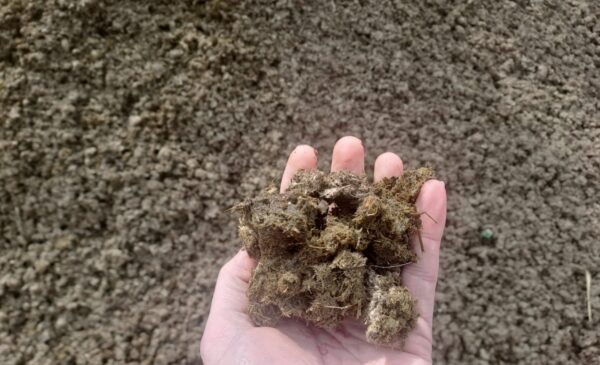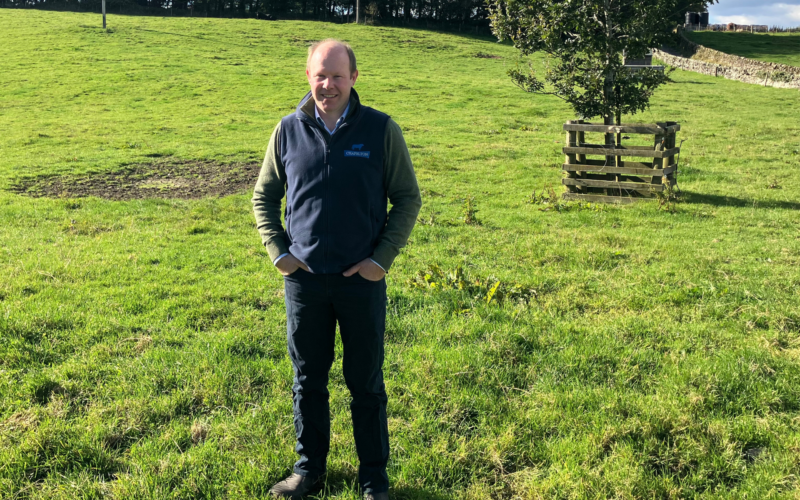The Voluntary Initiative (VI) is a UK-wide industry-led organisation that was set up to promote the sustainable use of plant protection products (PPP’s) through the use of an integrated pest management (IPM) – based approach. In Scotland, we have a Scottish VI Champion network throughout the country who showcase best practice when it comes to the use of IPM, using PPPs sustainably whilst minimising risks to both wildlife and water, and promoting professionalism throughout the industry through training and education.
Introducing Jamie Biggar, our Dumfries and Galloway Champion
The newest recruit to join this network is Jamie Biggar of Chapelton Farm, just outside Castle Douglas in Dumfries & Galloway. Jamie farms 1,100 acres of predominantly grassland, but also grows 87 acres of cereals, 38 acres of winter forage crops, and reseeds 90 acres of grassland annually. This supports his 410 suckler cows and followers, where a proportion of the heifers are kept as breeding stock, and the remainder finished, and steers are contract-finished off farm. The farm is also widely known for its sales of high-quality bulls. In addition, the farm runs 350 ewes.
Jamie’s focus on the farm is sustainability, whilst focusing on performance. There are no passengers at Chapelton! Each element plays a key integrated role in maximising performance and profitability within the whole system. A good example of this are the sheep, or ‘golden hoofs’ as he describes them, who play a vital role in grassland establishment, lightly grazing the new growth, minimising damage and promoting tillering of the new grass ley.
The integrated approach is central when it comes to land management on the farm. Grass is the key crop and is what Dumfries & Galloway is famous for. However, grass productivity can decline over time and needs to be rejuvenated with more productive modern grasses and clover. Profitability is maximised in the livestock enterprise by getting as much of the low cost, natural and high-quality product into the livestock, increasing growth rates. Sowing a high-quality and vigorous seed mixture of grasses and clover helps deliver this, and also reduces weeds on the farm through competition.
When it comes to all crops on the farm, including grass, Jamie employs the holistic IPM approach that combines multiple control strategies to manage pests, including weeds, in an environmentally friendly, economically viable, and socially responsible way. The key principle of IPM is to reduce reliance on chemical inputs by using them in combination with other methods. IPM encourages the use of preventive measures, monitoring, and targeted interventions to reduce the need for herbicides and to ensure that their use is both effective and sustainable.
As part of this systems approach, Jamie runs some simple but very effective crop rotations. On the better arable suited ground, he runs a rotation of winter oats, winter barley, winter barley, then followed by a 6-year grass ley. On the stonier ground, Jamie tends to rejuvenate pasture by integrating a forage crop and then putting the land back to better quality pasture.
The farm has been using a direct drill since 2020 for planting crops. This has many benefits: minimising impact on soil structure; ensuring soils do not dry out; less disturbance to the soil microbiology; and overall increasing carbon stocks in the ground. Jamie acknowledges that this system works very well in the main, but on occasion he still has to use the plough. Jamie’s land management system is all about having a flexible approach and using the best tool for the job, based on the circumstance.
Maintaining soil fertility at Chapelton is also seen as very important. Here technology plays a key role. The farm has been precision-mapped for phosphorous, potassium, and pH. This ensures valuable nutrients are put in the right place and used efficiently. The farm has made a cost saving over time as a result. Similarly, slurry is injected to minimise nutrient losses.
Grazing management at Chapelton is hugely important to the business success. Making the most of the grass sward through strip-grazing, rotational grazing and deferred grazing allows livestock to thrive. Equally important though, is the avoidance of overgrazing, which can weaken the grass cover, leaving bare patches where weeds can easily take over.
That said, sometimes a weed issue can develop over time. On the farm regular monitoring is carried out to catch weed problems early, before they become difficult to control. Visual inspections of grassland are done regularly to identify weed species and assess their distribution, as early detection allows for timely and targeted intervention. Both thistles and dock can become an issue on the farm if left uncontrolled. This control can take the form of a combination of mowing, topping or grazing, and reseeding where the infestation is high.
Herbicides are an important tool for weed control on the farm within the IPM framework. In this regard, the farm deploys a system of using data to inform management decisions. The basic principles here are:
- Choosing the right herbicide for the specific weeds present.
- Timing herbicide application to maximise effectiveness and reduce the need for repeat applications.
- Targeted herbicide applications to reduce environmental impact.
- Monitoring post-herbicide application to assess the effectiveness of the treatment.
Overall, decisions are made using a combination of expertise and experience. For example, with regard to spraying decisions, a WhatsApp group of the farm’s agronomist, spraying contractor, and the farm team all combine to decide what product can be optimally used, and when. As a side note, there is now a relatively new innovative technology used on the farm for weed control. The SKAi spot spraying system, which has an incorporated weed-detection system, and only sprays the weeds being targeted, thereby reducing chemical use and environmental impact. This judicious use of technology and expertise has certainly yielded the farm good results of late.
“Knowledge is power”
As a final note, and in keeping with VI principles, Jamie cites training and education as key fundamentals on his farm. The farm uses an agronomist who frequently walks the farm and advises on issues and the best products to use. Despite using a local contractor, both Jamie and the farm foreman are PA1 and PA2-trained, and both undertake regular CPD. Jamie says, ‘Knowledge is power and a combination of minds generally leads to a better outcome and works well here at Chapelton’. A general pride in doing the job right is evident here, with farm assurance certificates proudly displayed. This is a farm that takes pride in its place in Dumfries & Galloway and is an active custodian of its rich environment.
Related resources

Pond creations on farms
Harry Fisher, Ecological Consultant, SAC Consulting
Everyone loves a win-win, and when it comes to land management that can benefit biodiversity…

SAOS explores potato irrigation innovations
Scottish Agricultural Organisation Society Ltd.
SAOS have teamed up with the Scottish Potato Co-operative (SPC) to investigate water resource management.…

Slurry Separators
Craig Bothwell, SAC Consulting
Slurry separators can have many benefits such as improving the utilisation of slurry, increasing your…

